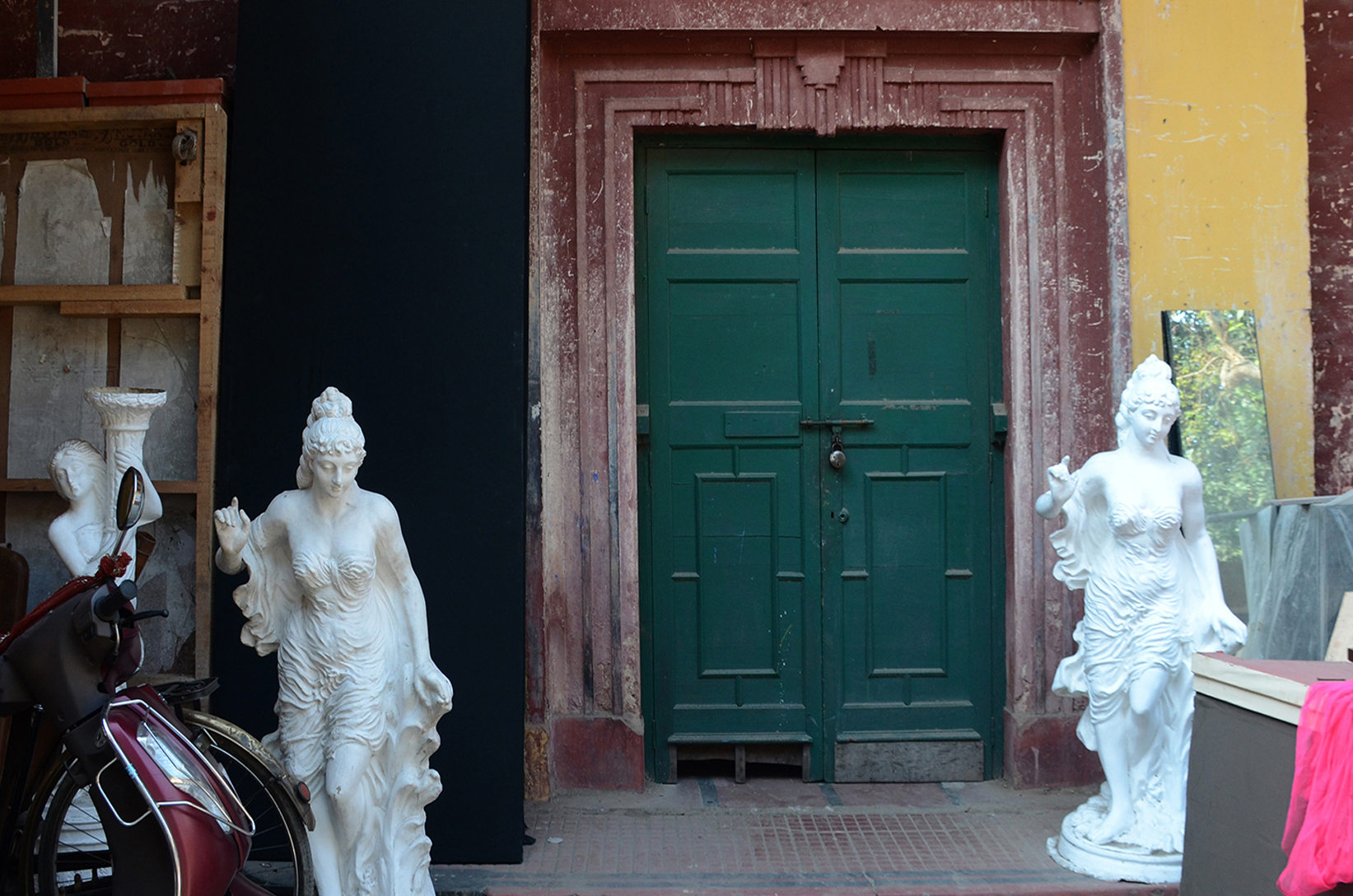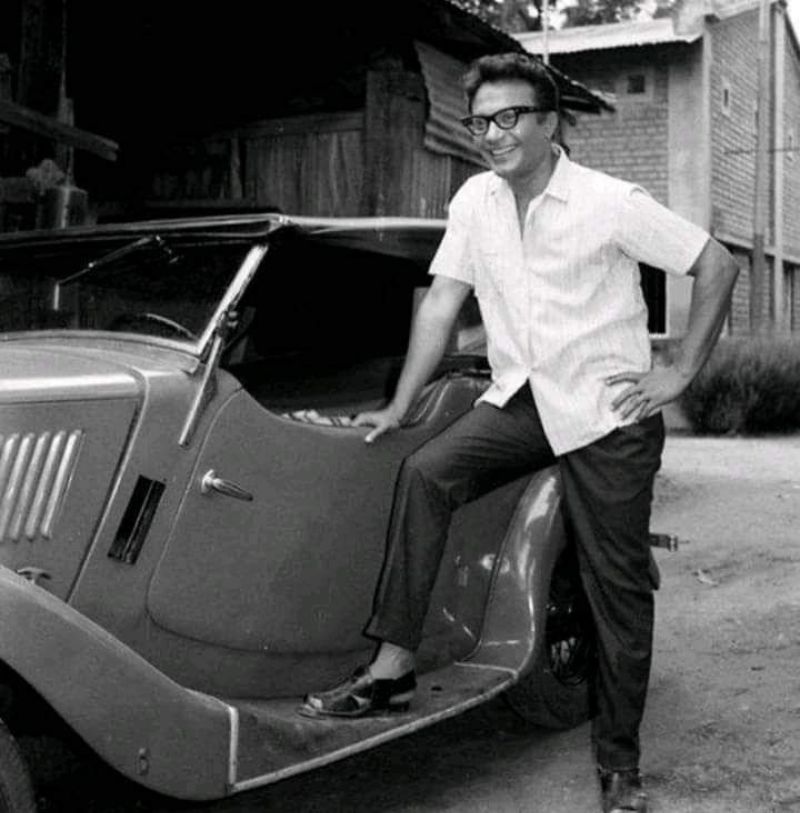
Madan Studio/ Indrapuri Studio
Address: NSC Bose Road
Years Active: 1917-present
First Film: Satyawadi Raja Harishchandra
Language: Bengali
Director: Rustomji Dhotiwala
Released on: 24.03.1917 at New Tent Maidan
Not just in Kolkata, but Indrapuri Studio is among the oldest studios in the whole of India. Kolkata’s first feature film — Satyabadi Raja Harishchandra (1917) — was shot here. The first Bengali feature film — Bilwamangal (1919) — was also shot here. So was the first Bengali talkie — Jamai Sashthi (1931). The journey, which began in 1917, continues till today.
During the silent era, the studio built by the Madan company was known as the Madan Studio. Jamshedji Framji Madan had set up the Elphistone Bioscope Company. It started screening films in tents during the early 20th century. Films were then shot on movie cameras too. It was the Madans who bagged the first assignment to show movies during World War I. Dadasaheb Phalke had by then made his first feature film (Raja Harishchandra, 1913). Madan now thought of investing more on producing feature films. A studio was made on approximately 10 bighas of land. Following Jamshedji’s demise in 1923, Madan’s empire was looked after by his son-in-law Rustomji Dhotiwala. Along with him were Madan’s two sons — Framji and Jehangir. By then, the market for films had increased leading to a demand for a bigger shooting space. In the 17th edition of the Nachghar magazine, an article was published in 1928. It stated that the work for building Madan’s new studio was over. Hit films like Kalparinoy (1930) and Giribala (1930) were shot in this new studio. A sum of Rs 1,60,000 was spent during those days to procure Kolkata’s first talkie machine. Amar Chowdhury directed Bengal’s first talkie called Jamai Sashthi (1931). Yet, the good old days of the Madans soon came to an end. Rustomji passed away in 1931. That was the start of the end. Family dispute began among the brothers. The studio was sold by the middle of the 1930s. It was bought by Raibahadur Seth Sukhlal Karnani. The studio was renamed as Tollywood. Work, however, had slowed down then. Karnani had not yet started his own production. By then, establishments like New Theatres, Kali Films, Radha Films, East India and Bharat Lakshmi had already made a huge presence in the market.Lady luck smiled again in the late 1930s and early 1940s. Karnani started his own production. He made Pathik (1939) under the banner of Indra Movietone that was named after his grandson, Indrakumar. In the publicity materials, this studio was referred to as either Tollywood Studio, Indra Movietone or Indrapuri. Since 1943, Indrapuri’s name gained currency. The studio continues to carry that name even in the 21st century. Indra Movietone produced films like Sree Radha (1941), Bramhankanya (1941), Milan (1942), Debar (1943), Kalankini (1945) and Pramathesh Barua’s Chander Kalanka (1944, bilingual) in the years prior to Independence.Some Hindi and Punjabi films were also produced. During that time, other production houses too wanted to rent the studio for shooting. All the early films of MP Productions — Mayer Pran (1941), Uttarayan (1941), Shesh Uttar (1942) — were shot at Indrapuri. It is not the productions but the facilities it offered that became the primary reason behind Indrapuri’s longevity. Raibahadur died in 1946 and the responsibility of running the studio fell on Indrakumar. The descriptions of Indrapuri in the early 1950s reveal that it had seven floors. Suresh Das, Ajoy Kar, Anil Gupta in camera, JD Irani and Gaur Das in sound, Kali Raha, Binay Bandyopadhyay, Rabin Das in editing and Dhirendranath Dasgupta in the laboratory department — all of them were once salaried employees of Indrapuri.The ownership might have changed hands but the studio still functions with six floors. It is one of the busiest studios in the city. Tejash Joshi is its current owner.
Selected Bengali Filmography
Bilwamangal (1919), Mahabharat (1920), Nal Damayanti (1921), Bishabriksha (1922), Ramayan (1922), Matrisneha (1923), Noorjahan (1923), Kamale Kamini (1924), Patni Pratap (1924), Joydeb (1926), Krishnakanter Will (1926), Durgeshnandini (1927), Chandidas (1927), Sarala (1928), Kapalkundala (1929), Bharat Ramani (1930), Giribala (1930), Kalparinoy (1930), Dalia (1930), Radharani (1930), Rajsingha (1930), Debi Chowdhurani (1931), Noukadubi (1932), Jamai Sashthi (1931), Prahlad (1931), Rishir Prem (1931), Bishnupriya (1932), Krishnakanter Will (1932), Joydeb (1933), Kalanka Bhanjan (1933), Phantom of Calcutta (1935), Satya Pathe (1935)
Films produced by Indra Movietone and shot at Indrapuri Studio:
Pathik (1939), Raspurnima (1941), Shakuntala (1941), Bramhankanya (1941), Sree Radha (1941), Milan (1942), Bhishma (1942), Debar (1943), Chander Kalanka (1944), Kalankini (1945)
Films shot at Indrapuri Studio:
Mayer Pram (1941), Uttarayan (1941), Shesh Uttar (1942), Jogajog (1943), Nilanguriya (1943), Sahadharmini (1943), Shahar Theke Dure (1943), Sandhi (1944), Bhabikal (1945), Mane Na Mana (1945), Chandrasekhar (1947), Kamana (1949), Hanabari (1952), Bouthakuranir Haat (1953), Ankush (1954), Hrad (1955), Chalachal (1956), Shyamali (1956), Gariber Meye (1960), Ashanta Ghurni (1964), Natun Jiban (1966), Shesh Theke Shuru (1968), Seemabaddha (1971), Joyjayanti (1971), Marjina Abdulla (jointly with NT2, 1973), Sonar Kella (1974), Mohunbaganer Meye (1976), Joi Baba Felunath (1979), Ghare Baire (1984), Antardhan (1991), Agantuk (1992), Hirer Angti (1992), Patalghar (Jointly with NT1, 2003), Shukno Lanka (2010)
Did You Know?
Many of Satyajit Ray’s films were shot here. Lucknow was recreated at this studio for Ray’s Shatranj Ke Khilari (1977). Richard Attenborough, Sanjeev Kumar, Saeed Jaffery and Amjad Khan came down to shoot here.




